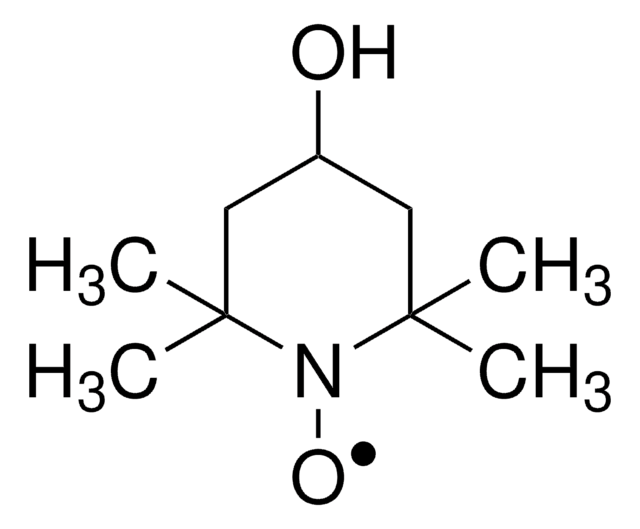Kluczowe dokumenty
T7024
N,N,N′,N′-Tetramethylethylenediamine
BioReagent, for molecular biology, ≥99% (GC)
Synonim(y):
1,2-Bis(dimethylamino)ethane, TEMED, TMEDA
About This Item
Polecane produkty
klasa czystości
Molecular Biology
for molecular biology
linia produktu
BioReagent
Próba
≥99% (GC)
granice wybuchowości
9.08 %
metody
GC/GC: suitable
współczynnik refrakcji
n20/D 1.4179 (lit.)
bp
120-122 °C (lit.)
mp
−55 °C (lit.)
gęstość
0.775 g/mL at 20 °C (lit.)
obecność zanieczyszczeń
DNase, RNase, protease, none detected
ciąg SMILES
CN(C)CCN(C)C
InChI
1S/C6H16N2/c1-7(2)5-6-8(3)4/h5-6H2,1-4H3
Klucz InChI
KWYHDKDOAIKMQN-UHFFFAOYSA-N
Szukasz podobnych produktów? Odwiedź Przewodnik dotyczący porównywania produktów
Zastosowanie
TEMED is a tertiary amine that is used to catalyze the formation of free radicals from ammonium persulfate or riboflavin. TEMED-generated free radicals cause the compounds acrylamide and bis-acrylamide to polymerize and form the gel matrix polyacrylamide. Because TEMED is functional only in its free base form, low pH conditions will inhibit polymerization.,,
The potential contribution of TEMED to elevated background in silver stained SDS PAGE has been studied. TEMED has been used in the coating of soft polymers, such as polyacrylamide, in capillaries for investigation by atomic force microscopy. Microchips containing oligonucleotides and proteins immobilized within gel pads have been prepared using TEMED.
The capillary isoelectric focusing of proteins with an isoelectric point (pI) > 12 has been investigated through the use of TEMED. TEMED has been used in the HPLC of small organic molecules.
Ilość
Hasło ostrzegawcze
Danger
Zwroty wskazujące rodzaj zagrożenia
Zwroty wskazujące środki ostrożności
Klasyfikacja zagrożeń
Acute Tox. 3 Inhalation - Acute Tox. 4 Oral - Eye Dam. 1 - Flam. Liq. 2 - Skin Corr. 1B
Kod klasy składowania
3 - Flammable liquids
Klasa zagrożenia wodnego (WGK)
WGK 1
Temperatura zapłonu (°F)
61.7 °F - closed cup
Temperatura zapłonu (°C)
16.5 °C - closed cup
Środki ochrony indywidualnej
Faceshields, Gloves, Goggles, type ABEK (EN14387) respirator filter
Wybierz jedną z najnowszych wersji:
Masz już ten produkt?
Dokumenty związane z niedawno zakupionymi produktami zostały zamieszczone w Bibliotece dokumentów.
Klienci oglądali również te produkty
Nasz zespół naukowców ma doświadczenie we wszystkich obszarach badań, w tym w naukach przyrodniczych, materiałoznawstwie, syntezie chemicznej, chromatografii, analityce i wielu innych dziedzinach.
Skontaktuj się z zespołem ds. pomocy technicznej









